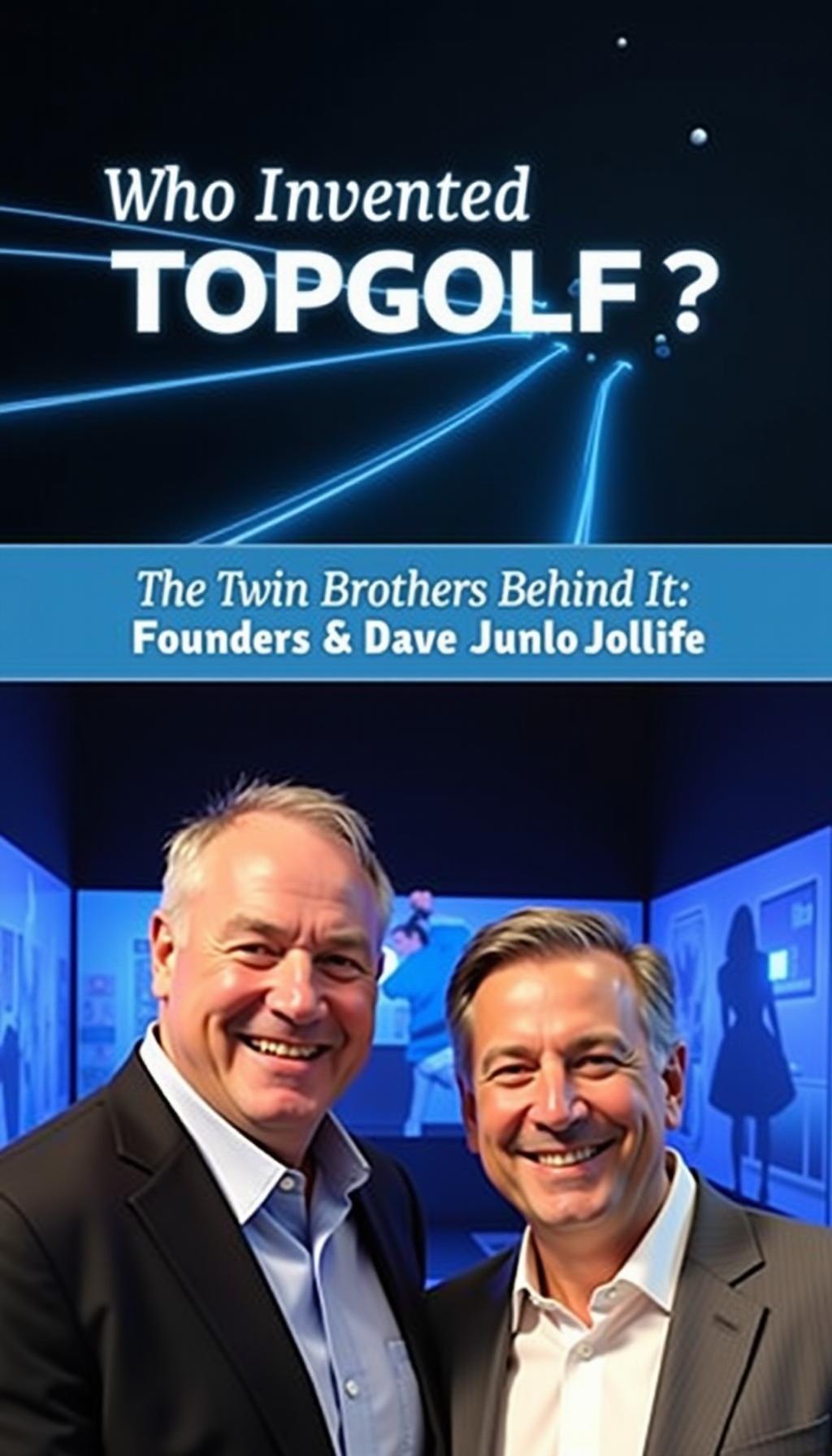As an Amazon Associate GolferHive.com earns from qualifying purchases.
Who Invented Topgolf? The Twin Brothers Behind It
Ever stood in a Topgolf bay, watched your glowing ball soar towards a giant target, and thought, “Who was the genius that came up with this?” You’re not alone. It’s a question that crosses the mind of nearly everyone who experiences the revolutionary blend of sport, technology, and entertainment that has completely transformed the traditional driving range.
Topgolf was invented by twin brothers Steve and Dave Jolliffe. They conceived the idea in 1997 and, after developing the core technology, opened the very first location in Watford, UK, in 2000, forever changing the way people practice and play golf.
This guide unpacks the complete, data-driven story of who invented Topgolf, from a simple moment of frustration to a global entertainment phenomenon. Leveraging extensive analysis of the company’s history, we’ll explore the core problem they solved, the groundbreaking technology they pioneered, and the strategic business pivots that fueled their explosive growth.
Key Facts
- The Inventors: Topgolf was invented by twin brothers Steve and Dave Jolliffe, who were looking for a new business venture after selling their previous company.
- The Spark: The idea was born in 1997 out of their shared frustration with the time-consuming and “lackluster” nature of traditional driving ranges, which an executive later described as being like “hitting rocks in a rock pile.”
- The Technology: The game-changing innovation was the integration of commercial microchip technology (RFID) directly into the golf balls, allowing for automated tracking and scoring of every shot’s distance and accuracy.
- The First Location: The very first Topgolf opened its doors in 2000 in Watford, a town just outside of London, United Kingdom, facing initial skepticism from the established golf industry.
- The Ownership: While Callaway Golf acquired Topgolf in a landmark deal in 2020, they did not invent or start the company; the Jolliffe brothers are the original founders.
The Quick Answer: Who Invented Topgolf?
Topgolf was invented by twin brothers Steve and Dave Jolliffe. They conceived the idea in 1997 and opened the first location in 2000. This simple fact is the starting point of a fascinating entrepreneurial journey that blended a love for golf with a vision for something much bigger.

The Jolliffe brothers weren’t just casual inventors; they were avid golfers looking to solve a personal pain point. Their story is a perfect example of how identifying a common frustration can lead to a groundbreaking innovation.
- The Inventors: Steve and Dave Jolliffe, twin brothers from London, England.
- The Idea Conceived: 1997, after selling their previous mystery shopping business.
- The First Venue Opened: 2000, marking the official launch of the concept.
The Problem That Sparked an Idea: Why Traditional Driving Ranges Weren’t Enough
The Jolliffe brothers invented Topgolf to solve their frustration with traditional driving ranges, which they found unengaging, time-consuming, and lacking excitement. For them, and for many others, the act of hitting a bucket of balls into an open field felt repetitive and failed to provide meaningful feedback or a sense of competition. It was a practice activity, not an experience.
But what exactly was so ‘lackluster’ about the traditional driving range experience for the Jolliffe brothers? They felt the entire process was ripe for disruption. It lacked the social energy, competitive spirit, and instant gratification that they believed could attract a much wider audience beyond hardcore golf enthusiasts. They saw a massive, untapped market for a more accessible and entertaining version of the game.
“Hitting rocks in a rock pile.”
This colorful description, reportedly used by an executive to describe the old driving range model, perfectly captures the problem the Jolliffes set out to solve. They didn’t just want to improve the driving range; they wanted to completely reinvent it from the ground up.
The Core Innovation: How Microchipped Golf Balls Changed the Game
Topgolf’s key innovation was embedding microchips (RFID) into golf balls, allowing technology to track each shot’s accuracy and distance for a competitive, gamified scoring system. This single technological leap transformed a passive practice session into a live, interactive game.
The secret was integrating then-new commercial microchip technology directly into the golf balls—a move that turned a passive activity into an interactive game. This wasn’t just about adding a screen; it was about making the golf ball itself intelligent.
Here’s how the technology works:
1. RFID Integration: Each Topgolf ball contains a tiny, passive Radio-Frequency Identification (RFID) microchip. This chip gives each ball a unique identification code.
2. Target Sensors: The giant, dartboard-like targets scattered across the outfield are equipped with sensors. When a microchipped ball enters a target, the sensors read its unique ID.
3. Data Transmission: This information—which ball landed in which target—is instantly relayed back to the player’s individual bay.
4. Scoring and Feedback: The system calculates the score based on the distance and accuracy of the shot and displays it on the screen in the player’s bay, providing immediate feedback and fostering a fun, competitive environment.
This patented system was the engine that powered the entire Topgolf experience. It answered the simple question every golfer has after a shot—”How good was that?”—with precise, data-driven answers and, most importantly, points.
From UK Startup to US Phenomenon: A Timeline of Topgolf’s Growth
Topgolf launched its first location in Watford, UK, in 2000, faced early challenges, and then expanded to the U.S. in 2005 after pivoting to a broader entertainment model. The journey from a single, experimental site outside London to a global entertainment powerhouse was neither quick nor easy.
Pro Tip: The key turning point wasn’t just technology, but the strategic pivot to make Topgolf an ‘experience’ with restaurants and event spaces. This shift in business model is what unlocked its massive potential and appeal.
The company’s history is marked by initial skepticism, strategic investment, and a crucial transformation that set the stage for its worldwide success.
| Year | Key Milestone | Significance |
|---|---|---|
| 1997 | The Jolliffe brothers conceive the idea for a “Target Oriented Practice Golf” facility. | The foundational concept is born out of personal frustration with traditional driving ranges. |
| 2000 | The first Topgolf location opens in Watford, UK. | The concept becomes a reality, but faces skepticism from the traditional golf world and slow financial returns. |
| 2004 | An investment group led by Richard Grogan sees potential beyond the technology. | A critical turning point. The new investors realize the business model needs to be about entertainment, not just golf practice. |
| 2005 | The first U.S |

